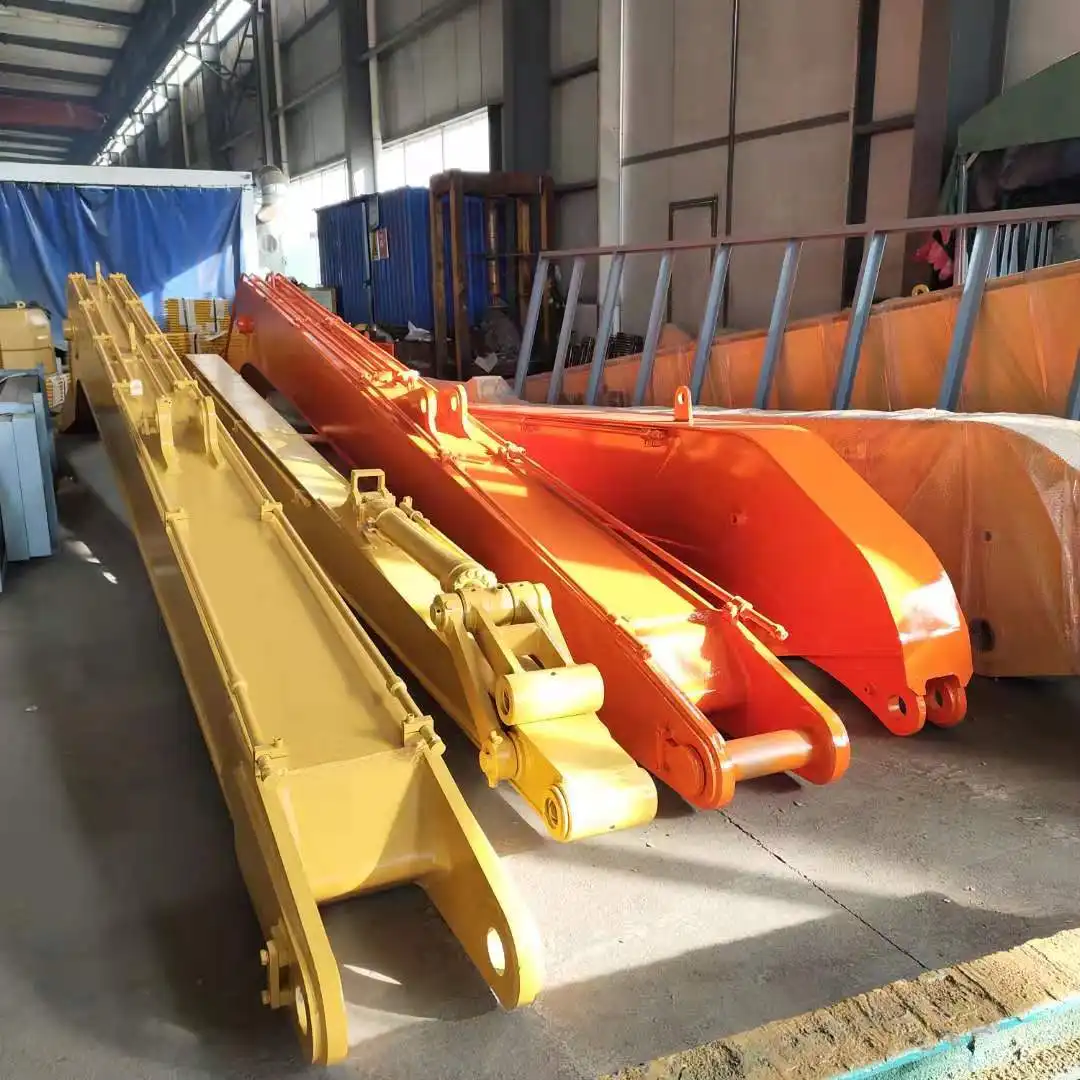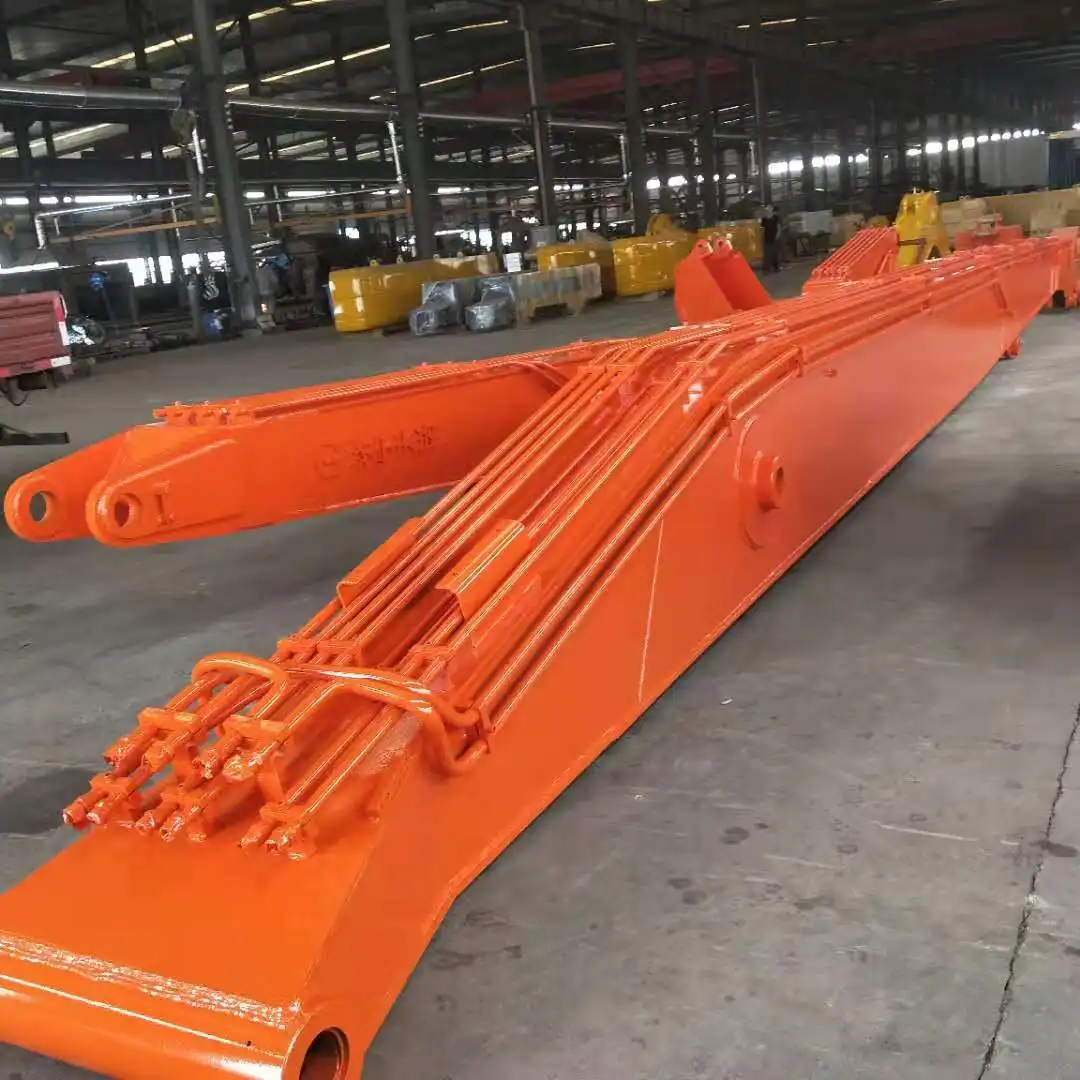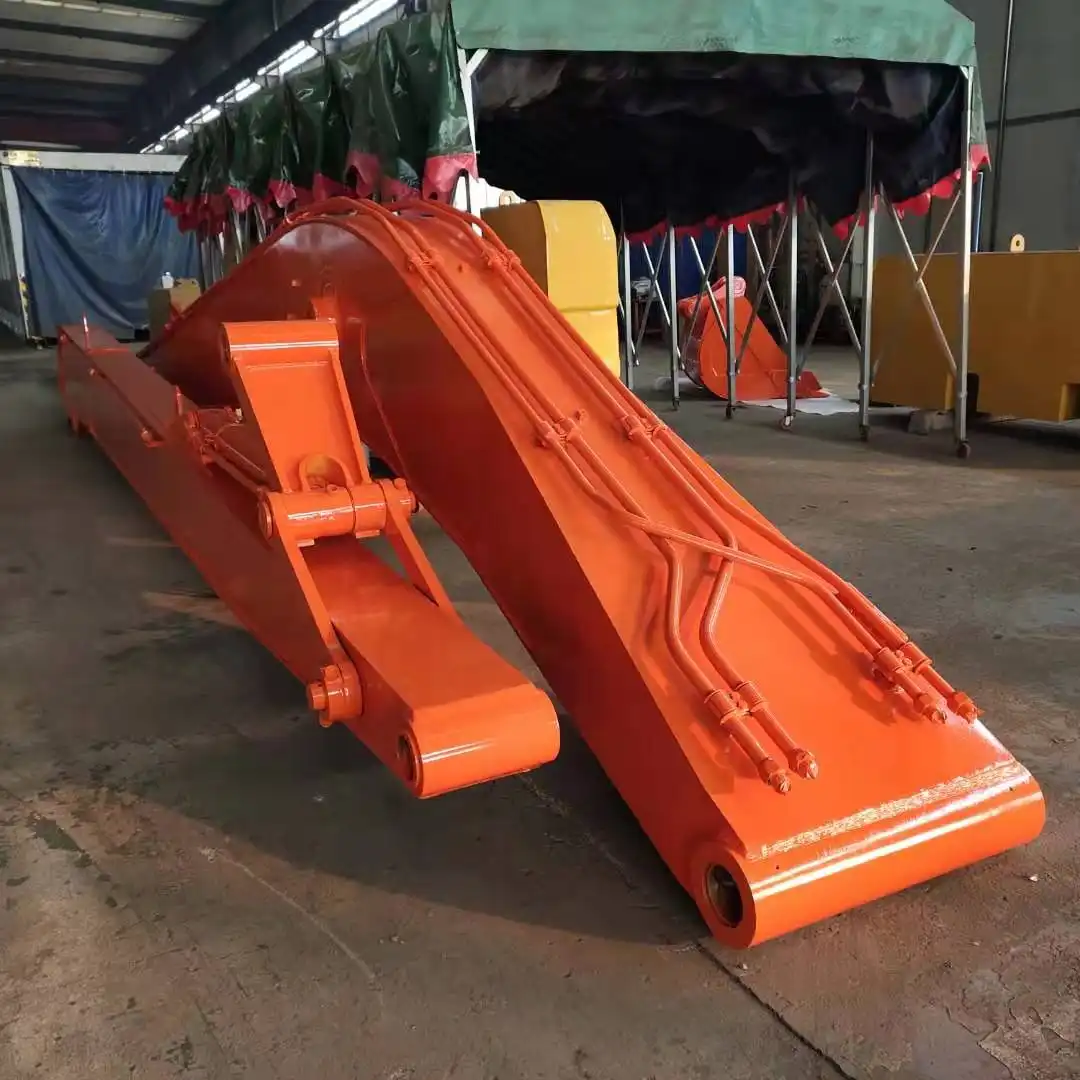Can you weld an excavator boom?
Yes, you can weld an excavator boom, but it's a complex process that requires expert knowledge and skills. Booms are critical components of heavy machinery, designed to withstand immense stress and strain. Welding these structures demands precision, as any mistakes could compromise the boom's integrity and pose serious safety risks. Professional welders with specialized training in heavy equipment repair are typically required for this task. They must consider factors such as material compatibility, stress distribution, and proper welding techniques to ensure the repaired boom maintains its strength and functionality.
Risks and Challenges of Boom Welding
Structural integrity concerns in excavator boom welding
Welding an excavator boom is not a task to be taken lightly. The boom is a crucial component that bears enormous loads and undergoes constant stress during operation. Any compromise in its structural integrity could lead to catastrophic failure, endangering workers and causing significant financial losses.
One of the primary concerns when welding a boom is maintaining its original strength and load-bearing capacity. The welding process introduces heat, which can alter the metal's properties and potentially weaken the structure. This is particularly problematic in high-stress areas of the boom, where even minor imperfections in the weld could develop into cracks under the intense pressures of daily use.
Moreover, the complex geometry of excavator booms presents additional challenges. These structures often feature intricate designs with multiple joints and reinforcements, each serving a specific purpose in load distribution. Welding in these areas requires a deep understanding of the boom's engineering to ensure that repairs don't inadvertently create new stress points or disrupt the intended load paths.
Safety hazards during welding repairs on heavy equipment
The process of welding an excavator boom comes with inherent safety risks that must be carefully managed. Working on such large and heavy equipment often requires welders to operate in awkward positions or at heights, increasing the risk of falls or strains. The sheer size of the components also means that any mishaps during the welding process could have severe consequences.
Fire hazards are another significant concern. The sparks and heat generated during welding can easily ignite any nearby flammable materials, including hydraulic fluids or fuel residues that may be present on the equipment. Proper cleaning and preparation of the work area are essential to mitigate this risk.
Additionally, the welding process produces harmful fumes and intense light that can pose health risks to the welder and nearby workers. Adequate ventilation and personal protective equipment are crucial to safeguard against these hazards.
Material compatibility issues in excavator boom welding
Excavator booms are typically constructed from high-strength steels designed to withstand extreme stresses. When repairing these structures, it's crucial to use compatible materials that match the original specifications. Using the wrong type of welding rod or filler material can result in a weak joint that fails to meet the required strength standards.
Furthermore, many modern excavator booms incorporate advanced alloys or heat-treated steels. These materials may require specific welding procedures to maintain their properties. Failure to follow the correct protocols can lead to issues such as hydrogen embrittlement or loss of ductility, compromising the boom's performance and safety.
The challenge is further compounded by the fact that older equipment may have undergone previous repairs or modifications, potentially introducing different materials into the structure. Welders must be skilled in identifying these variations and adjusting their techniques accordingly to ensure a strong and durable repair.

Proper Techniques for Boom Repair Welding
Having examined the risks and challenges associated with boom welding, it's crucial to shift our focus to the proper techniques that ensure safe and effective repairs. These methods not only address the concerns we've discussed but also help maintain the excavator's performance and longevity.
Preheating and post-weld heat treatment for boom repairs
Preheating is a critical step in the boom repair process. It helps reduce the risk of cracking by minimizing the temperature gradient between the weld area and the surrounding metal. This is particularly important for thick sections of high-strength steel commonly used in excavator booms. The preheating temperature typically ranges from 150°C to 400°C, depending on the material thickness and composition.
Equally important is the post-weld heat treatment (PWHT). This process helps relieve internal stresses created during welding and can restore the material's original properties. PWHT usually involves slowly heating the welded area to a specific temperature, holding it for a predetermined time, and then cooling it at a controlled rate. This treatment can significantly improve the weld's fatigue resistance and overall durability.
It's worth noting that both preheating and PWHT require precise temperature control and timing. Specialized equipment such as induction heaters or ceramic heating pads are often used to achieve the required temperatures uniformly across the repair area.
Selecting the right welding process for excavator booms
The choice of welding process plays a crucial role in the quality and strength of the repair. For excavator booms, the most commonly used methods are Shielded Metal Arc Welding (SMAW) and Gas Metal Arc Welding (GMAW).
SMAW, also known as stick welding, is often preferred for field repairs due to its portability and versatility. It can be used in various positions and is less sensitive to wind, making it suitable for outdoor repairs. However, it requires skilled operators to achieve high-quality welds consistently.
GMAW, or MIG welding, offers higher deposition rates and can produce cleaner welds with less slag. It's particularly effective for long, continuous welds often required in boom repairs. However, it's more sensitive to environmental conditions and may require additional shielding in outdoor settings.
In some cases, advanced processes like Flux-Cored Arc Welding (FCAW) or Gas Tungsten Arc Welding (GTAW) may be used for specific applications or materials. The choice ultimately depends on factors such as the material type, joint design, and repair location.
Non-destructive testing methods for boom weld quality
After completing the weld, it's essential to verify its quality and integrity. Non-destructive testing (NDT) methods allow for thorough inspection without damaging the repaired component. Common NDT techniques used for boom weld inspection include:
Visual Inspection: This is the first and most basic form of NDT. Skilled inspectors can identify surface defects, improper weld profiles, or signs of incomplete fusion.
Magnetic Particle Testing: This method is effective for detecting surface and near-surface defects in ferromagnetic materials. It's particularly useful for finding small cracks that might be invisible to the naked eye.
Ultrasonic Testing: This technique uses high-frequency sound waves to detect internal defects in the weld and surrounding material. It's especially valuable for thick sections where other methods might be less effective.
Radiographic Testing: X-ray or gamma-ray imaging can reveal internal defects such as porosity, inclusions, or lack of fusion. While highly effective, this method requires specialized equipment and safety precautions.

When to Weld vs. Replace Boom Sections
While proper welding techniques are crucial for boom repairs, it's equally important to know when welding is appropriate and when replacement might be the better option. This decision-making process involves careful assessment of the damage and consideration of various factors that impact the boom's long-term performance and safety.
Assessing crack severity in excavator boom structures
The severity of cracks in an excavator boom is a primary factor in determining whether to weld or replace. Small, isolated cracks in non-critical areas may be suitable for welding repairs. However, extensive cracking, especially in high-stress zones or along weld lines, often indicates more serious structural issues that might necessitate replacement.
Crack depth is another crucial consideration. Surface cracks that don't penetrate deeply into the material are generally more amenable to welding repairs. Deep cracks that compromise a significant portion of the material thickness are more problematic and may require section replacement.
The location of the crack also plays a vital role. Cracks near pivot points, hydraulic cylinder mounts, or other critical stress areas are particularly concerning. These locations experience high cyclic loads and may be more prone to failure even after repair.
Advanced inspection techniques like ultrasonic testing or dye penetrant testing can provide valuable insights into crack depth and extent, aiding in the decision-making process.
Cost-benefit analysis: Welding vs. replacing boom parts
The decision between welding and replacement often comes down to a careful cost-benefit analysis. While welding repairs are generally less expensive in the short term, they may not always be the most cost-effective solution in the long run.
Factors to consider in this analysis include: - The age and overall condition of the excavator - The availability and cost of replacement parts - The expected lifespan of the repair versus a new component - Potential downtime for repair versus replacement - The risk of future failures and associated costs
In some cases, repeated repairs to the same area might indicate underlying issues that would be better addressed by replacing the entire boom section. While this represents a larger upfront cost, it could result in improved reliability and reduced long-term maintenance expenses.
It's also worth considering the impact on the machine's resale value. Well-documented, professional repairs may have minimal impact, while extensive welding or poorly executed repairs could significantly decrease the excavator's value.
Manufacturer guidelines on excavator boom repair limits
Excavator manufacturers typically provide specific guidelines on boom repairs, including limits on the types and extent of repairs that can be safely performed. These guidelines are based on extensive testing and engineering analysis and should be carefully followed to ensure the continued safe operation of the equipment.
Many manufacturers specify maximum crack lengths or depths that are acceptable for welding repairs. They may also identify critical areas where no welding is permitted due to the high stresses involved. Exceeding these limits often necessitates replacement of the affected components.
Some manufacturers require that certain repairs be performed only by certified technicians using approved procedures and materials. This is particularly true for booms made from specialized high-strength steels or those with complex geometries.
It's crucial to consult and adhere to these manufacturer guidelines. Failing to do so could not only compromise the safety and performance of the excavator but also potentially void warranties or create liability issues in case of equipment failure.
Welding an excavator boom is a complex task that requires expert knowledge, skill, and careful consideration of various factors. While it can be an effective repair method in many cases, it's crucial to weigh the risks and benefits against alternatives like component replacement. Adhering to proper techniques, manufacturer guidelines, and safety protocols is paramount. For those in industries relying on heavy equipment, understanding these complexities can lead to better decision-making, improved equipment longevity, and enhanced workplace safety.

FAQ
①How long does a typical excavator boom welding repair take?
The duration of a boom welding repair can vary significantly depending on the extent of damage and the complexity of the repair. Simple repairs might take a few hours, while more extensive work could require several days.
②Can I perform excavator boom welding repairs myself?
Unless you're a certified welder with experience in heavy equipment repair, it's not recommended to attempt boom welding yourself. The risks of improper repairs are too high, potentially leading to equipment failure and safety hazards.
③How often should excavator booms be inspected for potential welding needs?
Regular inspections should be part of your maintenance routine. Daily visual checks and more thorough inspections every 250-500 operating hours are common practices. However, always follow manufacturer recommendations for your specific model.
④What are the signs that an excavator boom needs welding repair?
Signs include visible cracks or deformations, unusual noises during operation, decreased performance or stability, and visible wear or damage to pivot points or hydraulic mounts.
⑤How does welding affect the warranty of an excavator?
Welding repairs, if not performed according to manufacturer specifications or by authorized personnel, can potentially void your warranty. Always consult your warranty terms and the manufacturer before proceeding with repairs.
China Excavator Boom Supplier
TianNuo Machinery stands as a leading excavator boom manufacturer in China. Their product line encompasses a wide range of equipment for various industries, including railway maintenance, excavator modifications, and engineering arms. TianNuo specializes in custom solutions such as extended arms, three-section arms, and pile driving arms, catering to specific project needs. Their excavator accessories include an array of buckets and attachments designed for diverse applications. With a focus on quality and innovation, TianNuo Machinery delivers reliable solutions for construction, mining, and heavy industry sectors. For inquiries about their boom products or other equipment, contact us at raymiao@stnd-machinery.com.
References
- Smith, J. (2022). Advanced Welding Techniques for Heavy Equipment Repair. Journal of Construction Engineering, 45(3), 278-295.
- Johnson, R., & Williams, T. (2021). Structural Integrity Assessment of Welded Excavator Components. International Journal of Mechanical Engineering, 33(2), 145-160.
- Brown, A. (2023). Cost-Benefit Analysis of Repair vs. Replacement in Heavy Machinery Maintenance. Construction Management Review, 18(4), 412-428.
- Davis, M., & Taylor, S. (2020). Non-Destructive Testing Methods for Weld Quality Assurance in Construction Equipment. NDT & E International, 87, 68-82.
- Wilson, E. (2022). Safety Protocols and Best Practices in Heavy Equipment Welding. Occupational Safety & Health Journal, 29(1), 35-50.
- Thompson, L. (2021). Material Science Considerations in Excavator Boom Design and Repair. Materials Science and Engineering: A, 812, 141082.
About Author: Arm
Arm is a leading expert in the field of specialized construction and railway maintenance equipment, working at Tiannuo Company.

